Jichen Zhu
How Human-Centered Explainable AI Interface Are Designed and Evaluated: A Systematic Survey
Mar 21, 2024



Abstract:Despite its technological breakthroughs, eXplainable Artificial Intelligence (XAI) research has limited success in producing the {\em effective explanations} needed by users. In order to improve XAI systems' usability, practical interpretability, and efficacy for real users, the emerging area of {\em Explainable Interfaces} (EIs) focuses on the user interface and user experience design aspects of XAI. This paper presents a systematic survey of 53 publications to identify current trends in human-XAI interaction and promising directions for EI design and development. This is among the first systematic survey of EI research.
Improving Fairness in Adaptive Social Exergames via Shapley Bandits
Feb 21, 2023Abstract:Algorithmic fairness is an essential requirement as AI becomes integrated in society. In the case of social applications where AI distributes resources, algorithms often must make decisions that will benefit a subset of users, sometimes repeatedly or exclusively, while attempting to maximize specific outcomes. How should we design such systems to serve users more fairly? This paper explores this question in the case where a group of users works toward a shared goal in a social exergame called Step Heroes. We identify adverse outcomes in traditional multi-armed bandits (MABs) and formalize the Greedy Bandit Problem. We then propose a solution based on a new type of fairness-aware multi-armed bandit, Shapley Bandits. It uses the Shapley Value for increasing overall player participation and intervention adherence rather than the maximization of total group output, which is traditionally achieved by favoring only high-performing participants. We evaluate our approach via a user study (n=46). Our results indicate that our Shapley Bandits effectively mediates the Greedy Bandit Problem and achieves better user retention and motivation across the participants.
Fashion Style Generation: Evolutionary Search with Gaussian Mixture Models in the Latent Space
Apr 04, 2022



Abstract:This paper presents a novel approach for guiding a Generative Adversarial Network trained on the FashionGen dataset to generate designs corresponding to target fashion styles. Finding the latent vectors in the generator's latent space that correspond to a style is approached as an evolutionary search problem. A Gaussian mixture model is applied to identify fashion styles based on the higher-layer representations of outfits in a clothing-specific attribute prediction model. Over generations, a genetic algorithm optimizes a population of designs to increase their probability of belonging to one of the Gaussian mixture components or styles. Showing that the developed system can generate images of maximum fitness visually resembling certain styles, our approach provides a promising direction to guide the search for style-coherent designs.
Open Player Modeling: Empowering Players through Data Transparency
Oct 12, 2021

Abstract:Data is becoming an important central point for making design decisions for most software. Game development is not an exception. As data-driven methods and systems start to populate these environments, a good question is: can we make models developed from this data transparent to users? In this paper, we synthesize existing work from the Intelligent User Interface and Learning Science research communities, where they started to investigate the potential of making such data and models available to users. We then present a new area exploring this question, which we call Open Player Modeling, as an emerging research area. We define the design space of Open Player Models and present exciting open problems that the games research community can explore. We conclude the paper with a case study and discuss the potential value of this approach.
Dealing with Adversarial Player Strategies in the Neural Network Game iNNk through Ensemble Learning
Jul 05, 2021

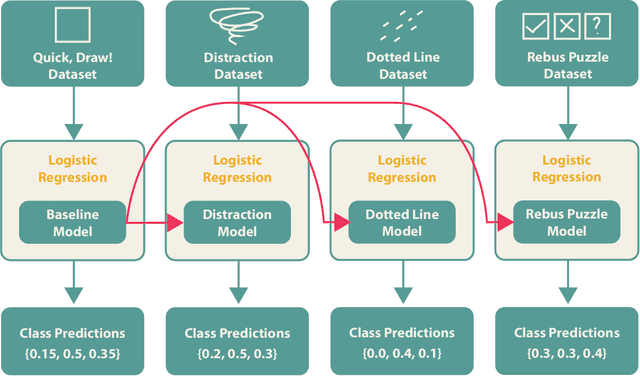
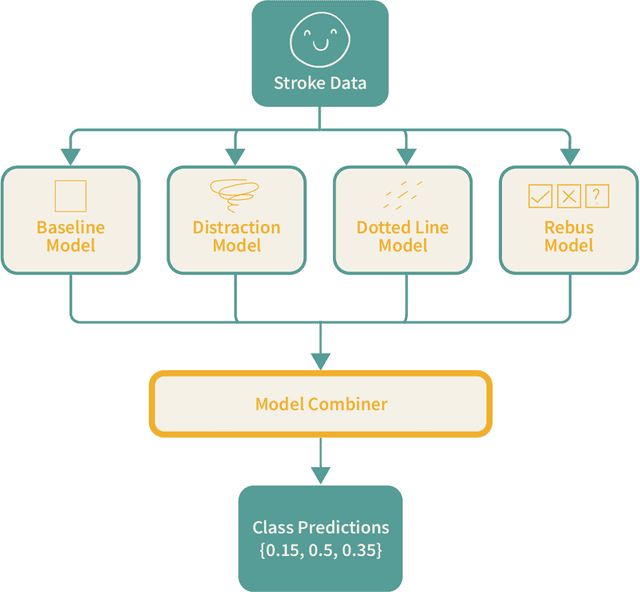
Abstract:Applying neural network (NN) methods in games can lead to various new and exciting game dynamics not previously possible. However, they also lead to new challenges such as the lack of large, clean datasets, varying player skill levels, and changing gameplay strategies. In this paper, we focus on the adversarial player strategy aspect in the game iNNk, in which players try to communicate secret code words through drawings with the goal of not being deciphered by a NN. Some strategies exploit weaknesses in the NN that consistently trick it into making incorrect classifications, leading to unbalanced gameplay. We present a method that combines transfer learning and ensemble methods to obtain a data-efficient adaptation to these strategies. This combination significantly outperforms the baseline NN across all adversarial player strategies despite only being trained on a limited set of adversarial examples. We expect the methods developed in this paper to be useful for the rapidly growing field of NN-based games, which will require new approaches to deal with unforeseen player creativity.
Player-Centered AI for Automatic Game Personalization: Open Problems
Feb 15, 2021



Abstract:Computer games represent an ideal research domain for the next generation of personalized digital applications. This paper presents a player-centered framework of AI for game personalization, complementary to the commonly used system-centered approaches. Built on the Structure of Actions theory, the paper maps out the current landscape of game personalization research and identifies eight open problems that need further investigation. These problems require deep collaboration between technological advancement and player experience design.
Personalization Paradox in Behavior Change Apps: Lessons from a Social Comparison-Based Personalized App for Physical Activity
Feb 11, 2021


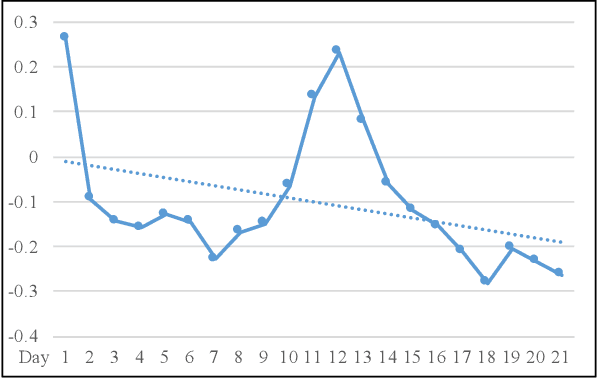
Abstract:Social comparison-based features are widely used in social computing apps. However, most existing apps are not grounded in social comparison theories and do not consider individual differences in social comparison preferences and reactions. This paper is among the first to automatically personalize social comparison targets. In the context of an m-health app for physical activity, we use artificial intelligence (AI) techniques of multi-armed bandits. Results from our user study (n=53) indicate that there is some evidence that motivation can be increased using the AI-based personalization of social comparison. The detected effects achieved small-to-moderate effect sizes, illustrating the real-world implications of the intervention for enhancing motivation and physical activity. In addition to design implications for social comparison features in social apps, this paper identified the personalization paradox, the conflict between user modeling and adaptation, as a key design challenge of personalized applications for behavior change. Additionally, we propose research directions to mitigate this Personalization Paradox.
Player Modeling via Multi-Armed Bandits
Feb 10, 2021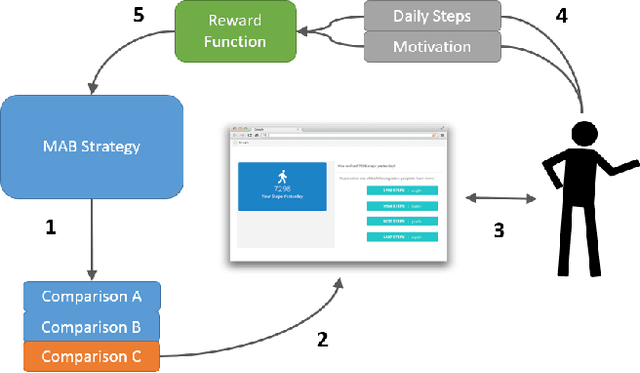

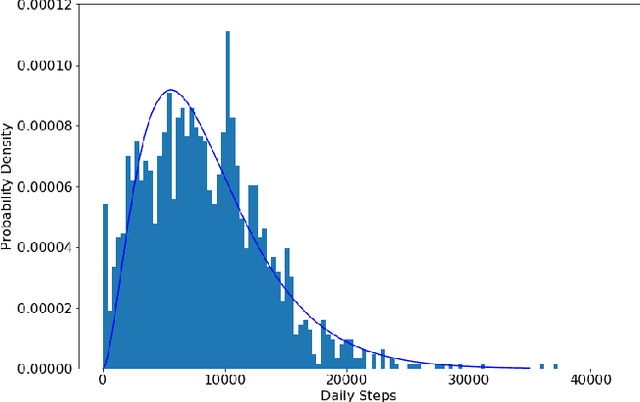
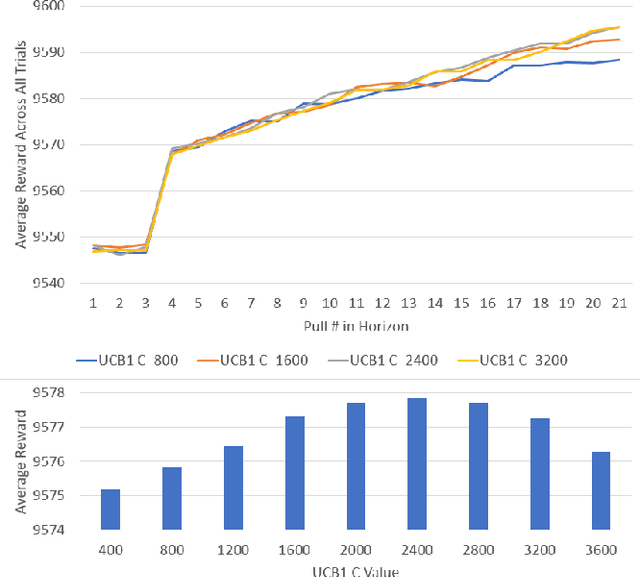
Abstract:This paper focuses on building personalized player models solely from player behavior in the context of adaptive games. We present two main contributions: The first is a novel approach to player modeling based on multi-armed bandits (MABs). This approach addresses, at the same time and in a principled way, both the problem of collecting data to model the characteristics of interest for the current player and the problem of adapting the interactive experience based on this model. Second, we present an approach to evaluating and fine-tuning these algorithms prior to generating data in a user study. This is an important problem, because conducting user studies is an expensive and labor-intensive process; therefore, an ability to evaluate the algorithms beforehand can save a significant amount of resources. We evaluate our approach in the context of modeling players' social comparison orientation (SCO) and present empirical results from both simulations and real players.
Regression Oracles and Exploration Strategies for Short-Horizon Multi-Armed Bandits
Feb 10, 2021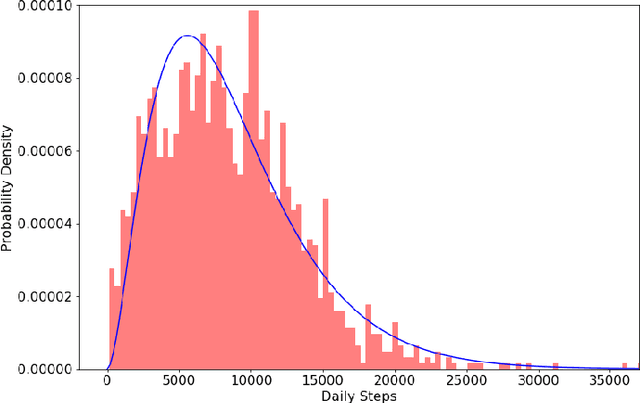
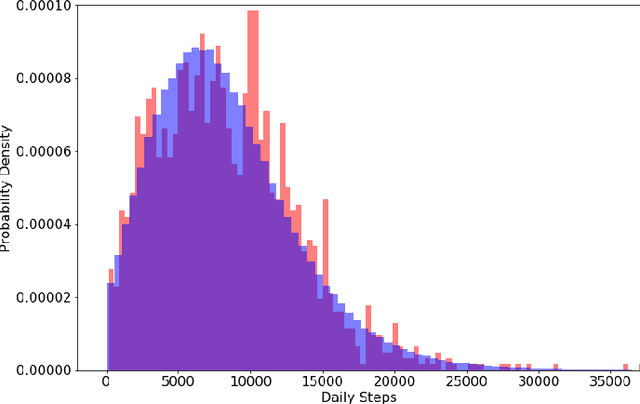
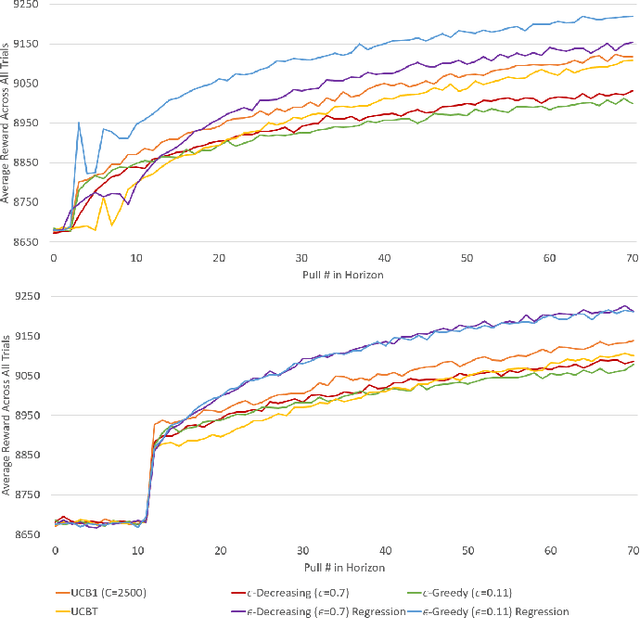
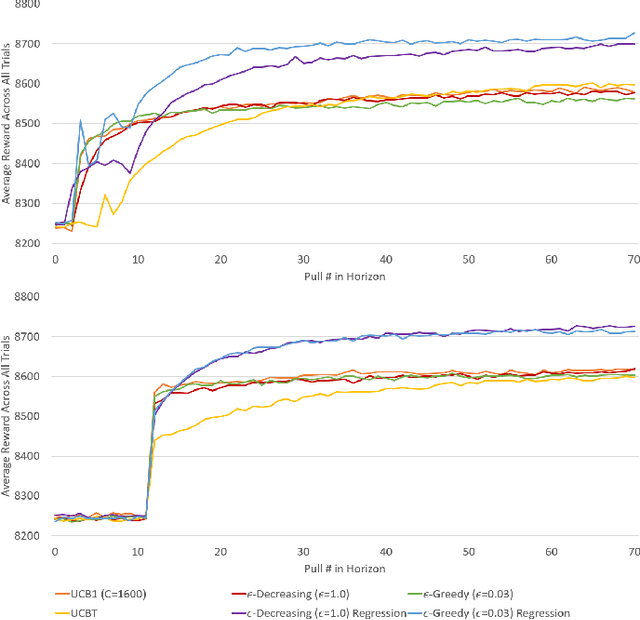
Abstract:This paper explores multi-armed bandit (MAB) strategies in very short horizon scenarios, i.e., when the bandit strategy is only allowed very few interactions with the environment. This is an understudied setting in the MAB literature with many applications in the context of games, such as player modeling. Specifically, we pursue three different ideas. First, we explore the use of regression oracles, which replace the simple average used in strategies such as epsilon-greedy with linear regression models. Second, we examine different exploration patterns such as forced exploration phases. Finally, we introduce a new variant of the UCB1 strategy called UCBT that has interesting properties and no tunable parameters. We present experimental results in a domain motivated by exergames, where the goal is to maximize a player's daily steps. Our results show that the combination of epsilon-greedy or epsilon-decreasing with regression oracles outperforms all other tested strategies in the short horizon setting.
* 8 pages
Player-AI Interaction: What Neural Network Games Reveal About AI as Play
Jan 18, 2021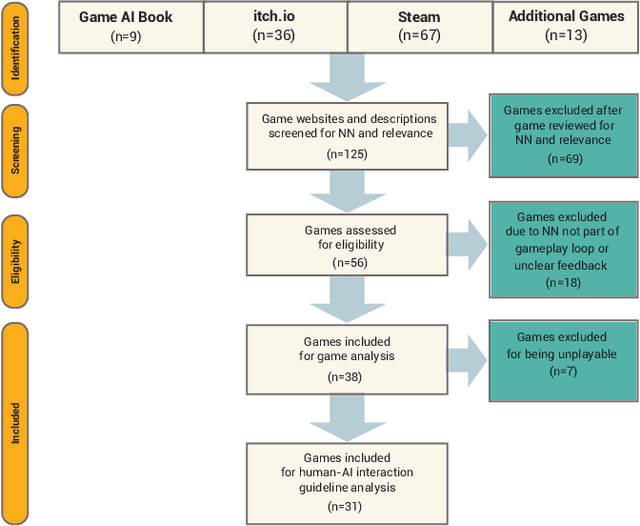
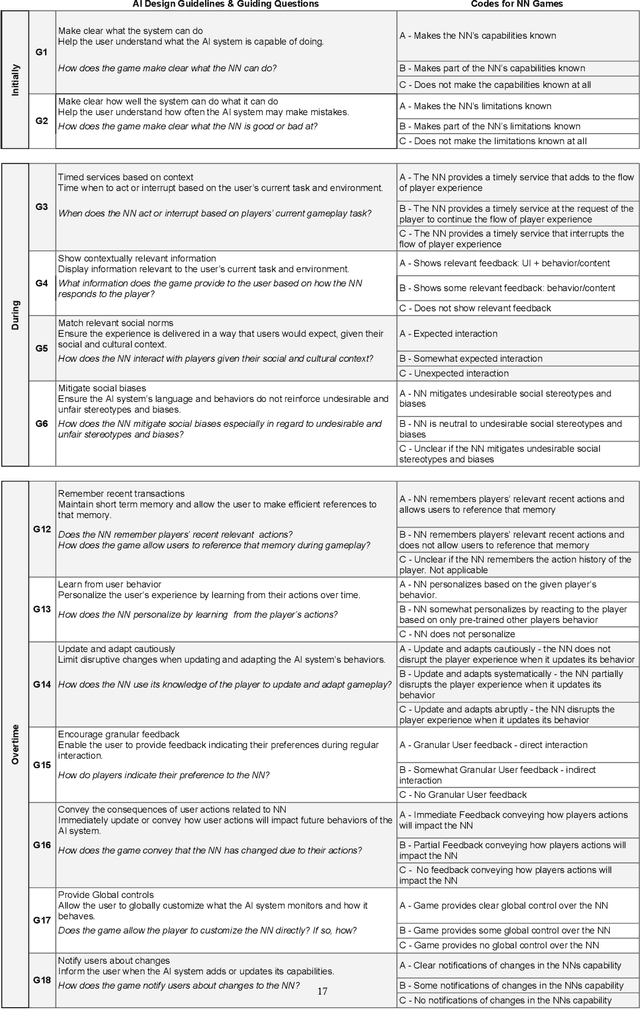

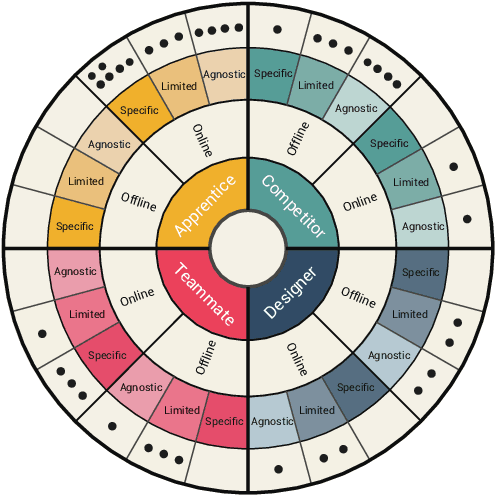
Abstract:The advent of artificial intelligence (AI) and machine learning (ML) bring human-AI interaction to the forefront of HCI research. This paper argues that games are an ideal domain for studying and experimenting with how humans interact with AI. Through a systematic survey of neural network games (n = 38), we identified the dominant interaction metaphors and AI interaction patterns in these games. In addition, we applied existing human-AI interaction guidelines to further shed light on player-AI interaction in the context of AI-infused systems. Our core finding is that AI as play can expand current notions of human-AI interaction, which are predominantly productivity-based. In particular, our work suggests that game and UX designers should consider flow to structure the learning curve of human-AI interaction, incorporate discovery-based learning to play around with the AI and observe the consequences, and offer users an invitation to play to explore new forms of human-AI interaction.
 Add to Chrome
Add to Chrome Add to Firefox
Add to Firefox Add to Edge
Add to Edge